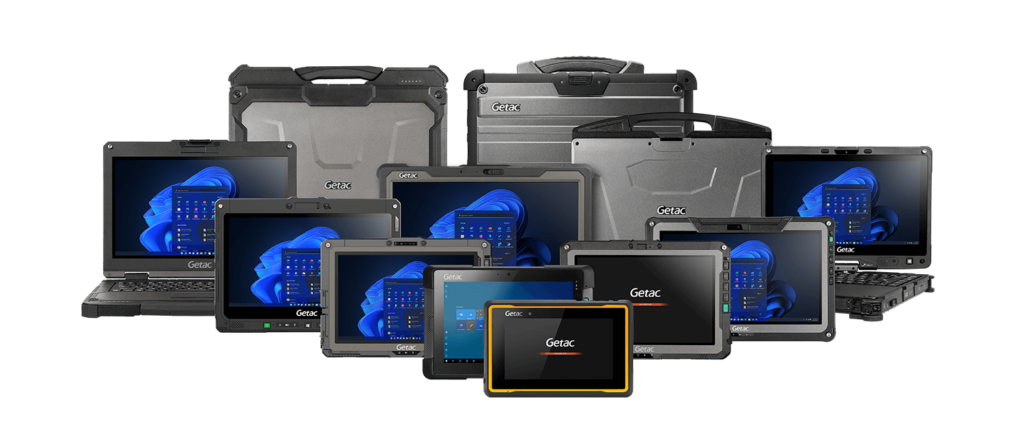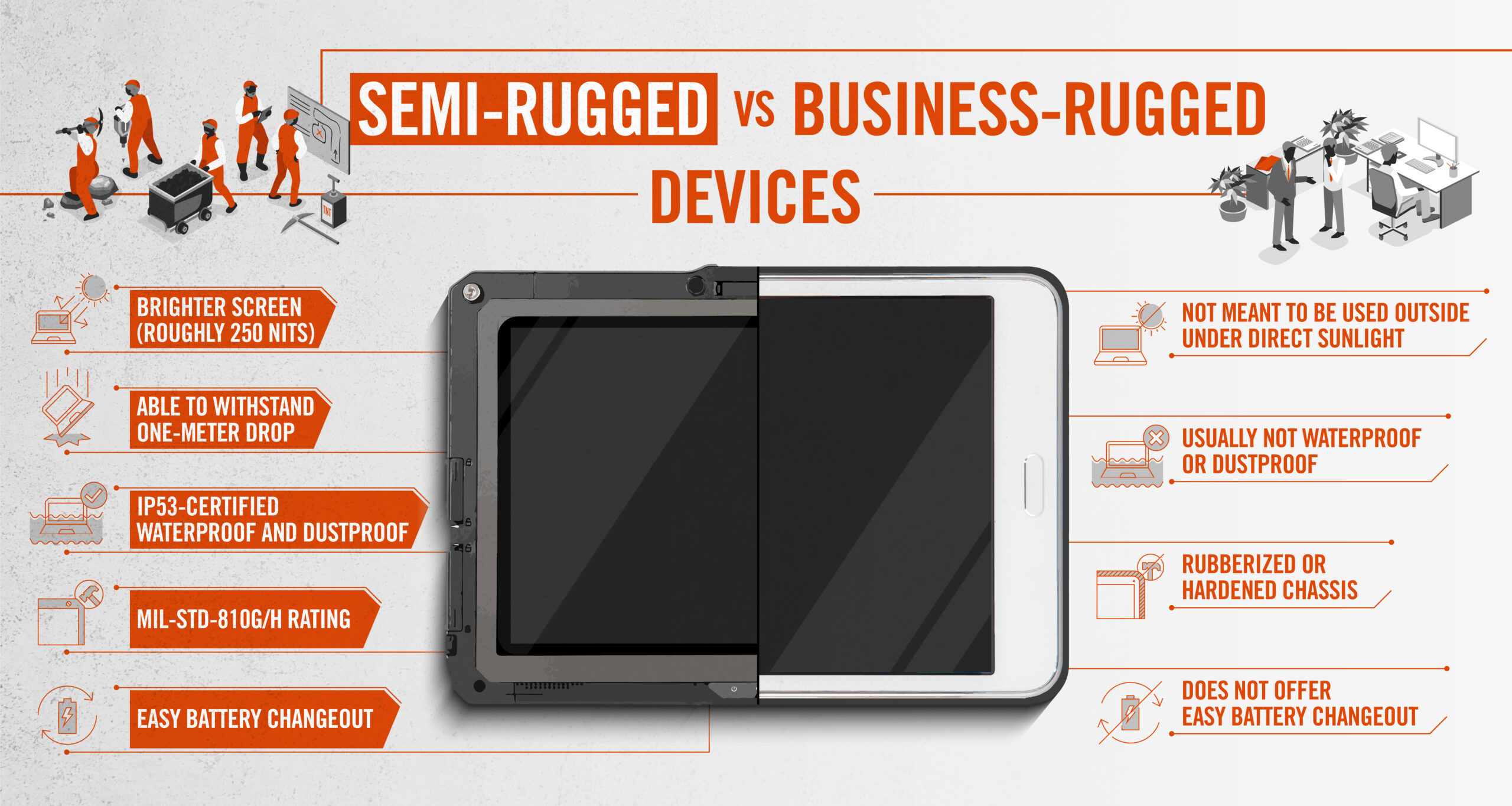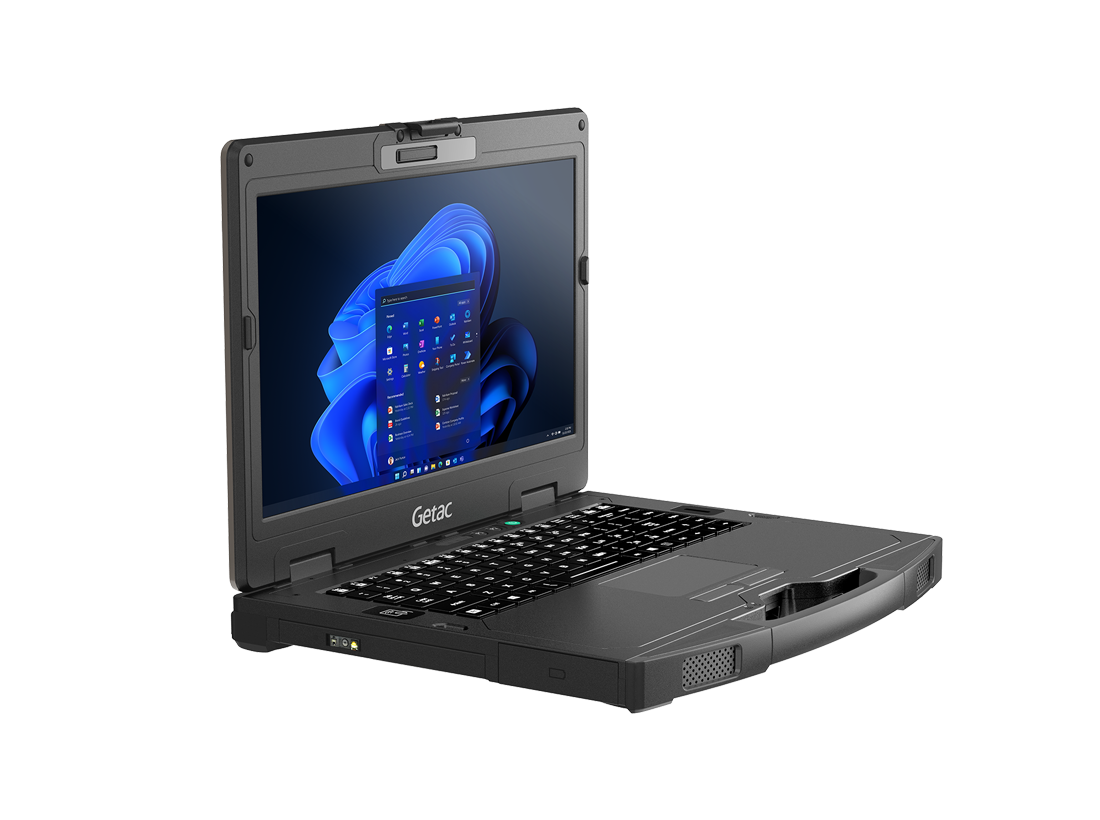As one of the leading rugged computer providers, Getac offers extensive rugged computing product lines and serves a wide range of vertical markets.

Getac Select
A combination of rugged computing devices, software, accessories and professional services in a purposeful range of specifically tailored solutions.
Getac Video Solutions
Video capture, evidence management, rugged hardware and robust software solutions for law enforcement and other industries.
Defense
Mission-critical COTS computing that delivers high powered processing and reliability in operational environments
Public Safety
Law Enforcement, EMS, Fire & Rescue applications
Utilities
Smart Meter Reading and Installation, On-site Safety, Utility Asset Management, Workforce Management for Utilities, Mobile GIS, Surveying and Mapping
Transportation & Logistics
Railroad Management, Airport Management, Port Management, Long-haul Delivery Fleet Management, Warehouse Materials Handling
Industrial Manufacturing
Industrial Programming and Robotic Control, Facility management, Compliance and Inspections, Workforce Management, Inventory and Warehouse Management, Factory Automation and Plant Monitoring, EAM and CMMS Solutions.
Automotive
Optimized Rugged Mobile Solutions to drive a smarter approach throughout the automotive value-chain.
Natural Resources
Mining, Forestry and Construction applications
Oil & Gas
Remote Support, Asset Management, Field Data Analysis, Workplace Safety
Suppose you’re in the market for a rugged laptop, and your organization can live without the most extreme guaranteed tolerances expected of a fully-rugged or ultra-rugged model. In that case, the vetting process can be confusing.
You may encounter terms like semi-rugged laptop, business-rugged laptop, enterprise rugged laptop, and just plain rugged laptop. Some of these terms are meaningful, and some are marketing.
A rugged laptop is a type of laptop that is designed to withstand harsh environmental conditions such as extreme temperatures, dust, water, and shocks.
Getac manufactures rugged laptops and tablets, but not all are equally rugged, so Getac doesn’t classify any individual model or line of models as "rugged." Instead, our laptop lines are classified as fully-rugged or semi-rugged.
However, other device vendors or third parties (such as journalists or analysts) may use the more generic term “rugged” as a laptop classification. If they do, Getac recommends assuming they mean “semi-rugged laptop” unless proven otherwise.

Semi-rugged laptops are designed for professionals who need a portable computer designed with a full keyboard but who also spend portions of their day in hard-hat areas and other non-office environments where safety and climate control cannot be guaranteed, such as workshops, machine rooms, factory floors, vehicles, and the outdoors, but who don't need the most extreme tolerances you'd get with a fully-rugged laptop.
Semi-rugged laptops offer a brighter screen than what many regular laptops offer on average (roughly 250 nits), so workers can use these devices under sunlight.
Semi-rugged laptops are also rated to withstand a one-meter (three-foot) drop onto a cement floor and are IP53-certified waterproof and dustproof while sporting a MIL-STD-810G/H rating against various forms of stress that might be encountered on rough terrain or in a harsh environment, such as extreme vibration or extreme temperatures.
Industries that use semi-rugged laptops include automotive, manufacturing, law enforcement, and certain utilities. But in truth, workers can benefit from semi-rugged devices in any industry or enterprise where:
A Business-rugged (aka enterprise-rugged) laptop is a regular notebook modified to better handle the rigors of business mobility and travel.
It may have certain shock-mounted internal components (such as the data storage drive). It may have a rubberized or hardened chassis, making it more tolerant of impact or drop than a normal laptop.
However, it is still a business device built for business travel, meant to be used in climate-controlled indoor areas. It is not suitable for frontline professionals who leave those areas.
Business-rugged laptops are not meant to be used outside under direct sunlight or in harsh temperatures, or in harsh environments.

They are usually not waterproof or dustproof. They usually won’t offer a long battery life or easy battery changeout (making full-shift operation away from a wall or vehicle problematic). And they also generally don't offer a user-removable disk for extra data security, nor will there be extra accessories from the vendor for safe usage during vehicle riding, such as a mount or docking station.
A business-rugged notebook might not have IP or MIL-STD certifications for hazardous duty or extreme environments.
Granted, just because a ruggedized PC doesn’t have the certifications doesn’t mean it can’t tolerate the relevant stresses and elements.
It may simply mean that the device hasn’t been tested to prove it. But without those certifications, you have no way of knowing. Getac does not recommend considering a laptop rugged without them.
During the vetting process, decision-makers may encounter information on the Internet that classifies semi-rugged laptops as equivalent to business-rugged laptops (i.e., regular laptops that have received one or a few shock-mounted components or rubber-mounted hard drives).
Getac does not speak for or comment upon competitors or other third parties. However, Getac does not sell regular laptops, or any other ordinary portables, upgraded or not. The company is, and always has been, a dedicated specialist in rugged computers.

Every laptop or tablet Getac sells is a rugged portable computer explicitly built for hazardous duty in the harsh temperatures and stresses of the everyday world, not just the office.
Getac's ruggedized line offers features that cannot be bought elsewhere. These include Getac’s proprietary LumiBond ultra-bright touchscreen technology, house-made magnesium alloys, and impact-resistant polymers.
To learn more about Getac's laptops, click here
As one of the leading rugged computer providers, Getac offers extensive rugged computing product lines and serves a wide range of vertical markets.


